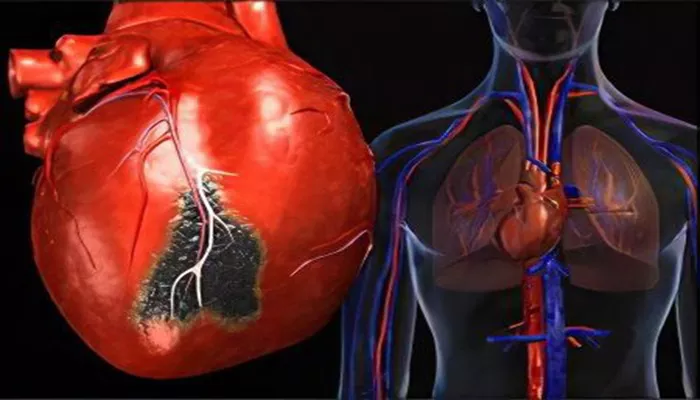Myocarditis, an inflammation of the heart muscle (myocardium), can be a serious condition. It often results from viral infections, autoimmune diseases, or other triggers. Recognizing whether myocarditis is worsening is crucial for effective management and treatment. This article aims to provide comprehensive insights into identifying worsening myocarditis, focusing on symptoms, diagnostic methods, and recommended actions.
Recognizing Worsening Symptoms
Increased Chest Pain or Discomfort
Persistent or worsening chest pain can indicate that myocarditis is progressing. Pain may become more severe, sharp, or radiate to other areas such as the back, arms, or jaw. It’s essential to monitor changes in pain intensity and character.
Shortness of Breath
Shortness of breath, or dyspnea, can worsen with myocarditis. This symptom might become more pronounced, especially with physical exertion or even at rest. Difficulty breathing or a feeling of suffocation warrants immediate attention.
Fatigue and Weakness
An increase in overall fatigue and weakness can signal worsening myocarditis. Patients may notice that everyday activities become increasingly difficult, and they may experience a general sense of exhaustion.
Swelling (Edema)
Swelling in the legs, ankles, or abdomen can occur as myocarditis progresses. Fluid retention might be accompanied by weight gain and a noticeable increase in swelling, indicating potential heart failure.
SEE ALSO: What Is Eosinophilic Myocarditis?
Palpitations
Frequent or severe palpitations—irregular or rapid heartbeats—can be a sign of worsening myocarditis. Patients may feel their heart racing, fluttering, or skipping beats.
Fainting (Syncope)
Episodes of fainting or near-fainting can occur if myocarditis worsens. This might be due to decreased cardiac output or abnormal heart rhythms. Fainting episodes should be evaluated promptly.
Diagnostic Methods
Electrocardiogram (ECG)
An ECG records the heart’s electrical activity. Changes in ECG patterns can indicate worsening myocarditis. Look for signs such as ST-segment elevation or depression, T-wave inversion, or abnormal Q waves.
Echocardiogram
This imaging test uses ultrasound waves to create pictures of the heart. A worsening condition might show reduced heart function, enlarged heart chambers, or abnormal heart wall movements.
Cardiac MRI
Cardiac MRI provides detailed images of the heart muscle. It can help detect inflammation, edema, and damage to the myocardium. Increased inflammation or scarring might suggest worsening myocarditis.
Blood Tests
Blood tests can help assess heart damage and inflammation. Elevated levels of cardiac biomarkers (such as troponins) and inflammatory markers (such as C-reactive protein) might indicate worsening myocarditis.
Biopsy
In some cases, a heart biopsy might be performed to examine heart tissue for inflammation or other abnormalities. This procedure can help determine the extent of myocarditis and guide treatment.
Management And Treatment
Medication Adjustment
Treatment often involves medications to manage symptoms and inflammation. If myocarditis is worsening, medication dosages or types might need adjustment. Common treatments include anti-inflammatory drugs, corticosteroids, and medications to support heart function.
Lifestyle Modifications
Patients should follow recommended lifestyle changes, such as a low-sodium diet, regular exercise (as advised by a healthcare provider), and avoiding alcohol and tobacco. Lifestyle adjustments can help manage symptoms and prevent further deterioration.
Monitoring and Follow-Up
Regular follow-up appointments with a cardiologist are essential.
These visits allow for ongoing assessment of heart function, symptom progression, and treatment effectiveness. Patients should report any new or worsening symptoms to their healthcare provider promptly.
Hospitalization
In severe cases, hospitalization might be necessary for intensive monitoring and treatment. This could involve intravenous medications, mechanical support devices, or other interventions to manage acute symptoms and complications.
When to Seek Immediate Help
Severe Symptoms
If symptoms like severe chest pain, difficulty breathing, or loss of consciousness occur, seek emergency medical attention immediately.
These signs may indicate a life-threatening progression of myocarditis.
Persistent or Unresponsive Symptoms
If symptoms persist despite treatment or worsen over time, consult a healthcare provider without delay. Adjustments to the treatment plan or additional diagnostic tests might be needed.
Conclusion
Recognizing and managing worsening myocarditis is critical to preventing complications and improving outcomes. By monitoring symptoms, utilizing diagnostic tools, and adhering to treatment recommendations, patients and healthcare providers can work together to address the condition effectively. If you suspect your myocarditis is worsening, seek medical advice promptly to ensure timely intervention and support.

